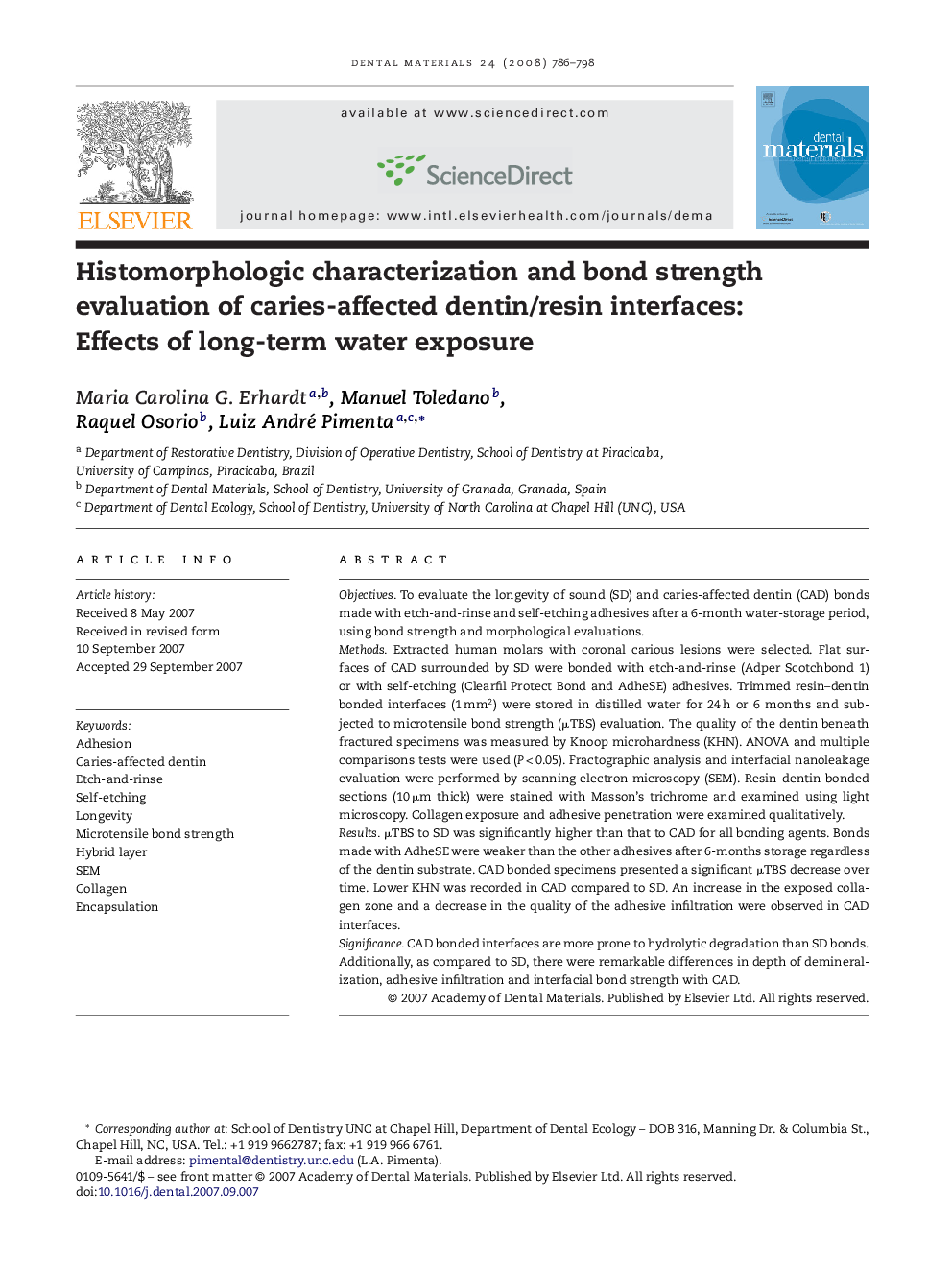| کد مقاله | کد نشریه | سال انتشار | مقاله انگلیسی | نسخه تمام متن |
|---|---|---|---|---|
| 1423138 | 986482 | 2008 | 13 صفحه PDF | دانلود رایگان |

ObjectivesTo evaluate the longevity of sound (SD) and caries-affected dentin (CAD) bonds made with etch-and-rinse and self-etching adhesives after a 6-month water-storage period, using bond strength and morphological evaluations.MethodsExtracted human molars with coronal carious lesions were selected. Flat surfaces of CAD surrounded by SD were bonded with etch-and-rinse (Adper Scotchbond 1) or with self-etching (Clearfil Protect Bond and AdheSE) adhesives. Trimmed resin–dentin bonded interfaces (1 mm2) were stored in distilled water for 24 h or 6 months and subjected to microtensile bond strength (μTBS) evaluation. The quality of the dentin beneath fractured specimens was measured by Knoop microhardness (KHN). ANOVA and multiple comparisons tests were used (P < 0.05). Fractographic analysis and interfacial nanoleakage evaluation were performed by scanning electron microscopy (SEM). Resin–dentin bonded sections (10 μm thick) were stained with Masson's trichrome and examined using light microscopy. Collagen exposure and adhesive penetration were examined qualitatively.ResultsμTBS to SD was significantly higher than that to CAD for all bonding agents. Bonds made with AdheSE were weaker than the other adhesives after 6-months storage regardless of the dentin substrate. CAD bonded specimens presented a significant μTBS decrease over time. Lower KHN was recorded in CAD compared to SD. An increase in the exposed collagen zone and a decrease in the quality of the adhesive infiltration were observed in CAD interfaces.SignificanceCAD bonded interfaces are more prone to hydrolytic degradation than SD bonds. Additionally, as compared to SD, there were remarkable differences in depth of demineralization, adhesive infiltration and interfacial bond strength with CAD.
Journal: Dental Materials - Volume 24, Issue 6, June 2008, Pages 786–798